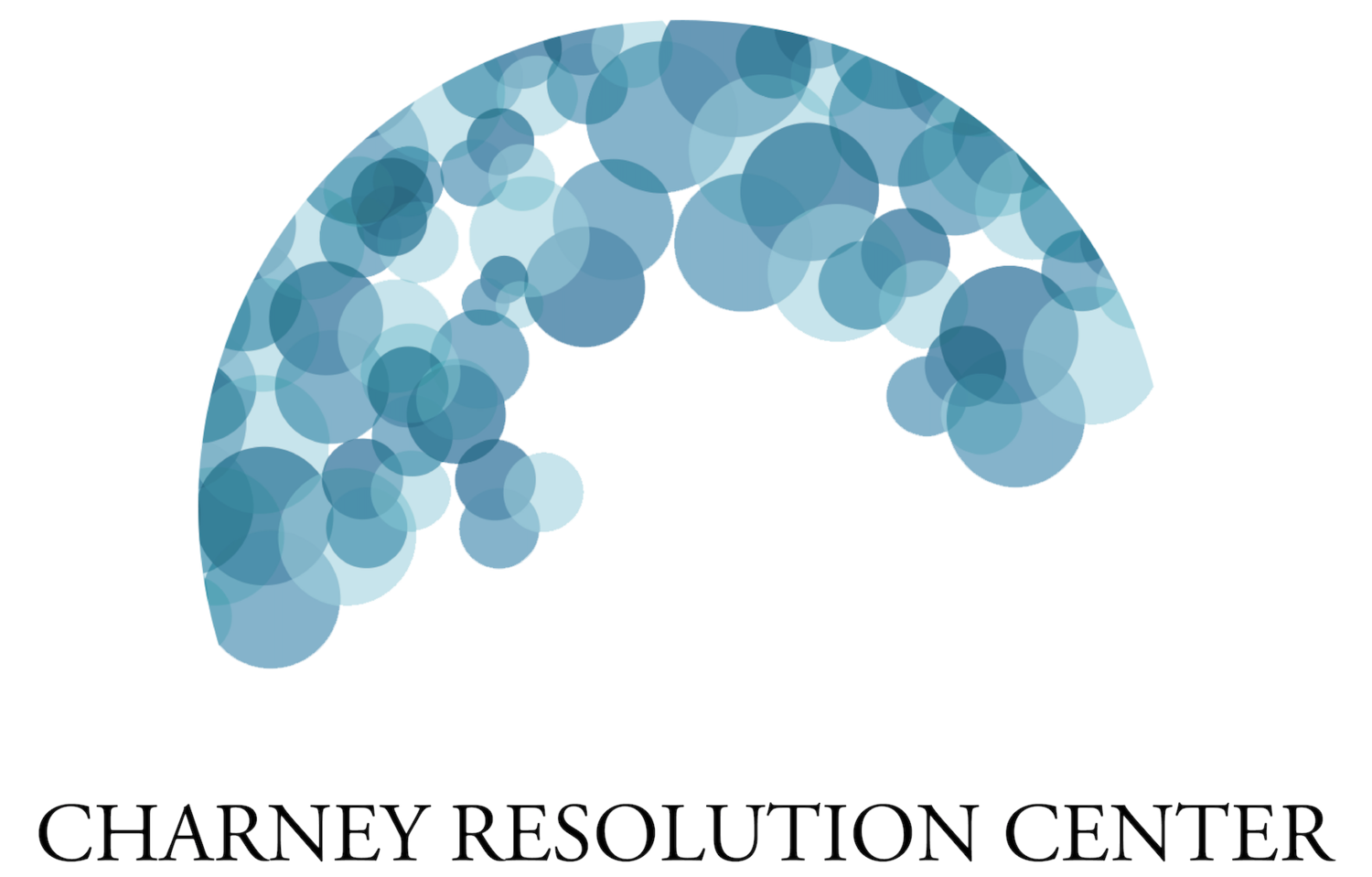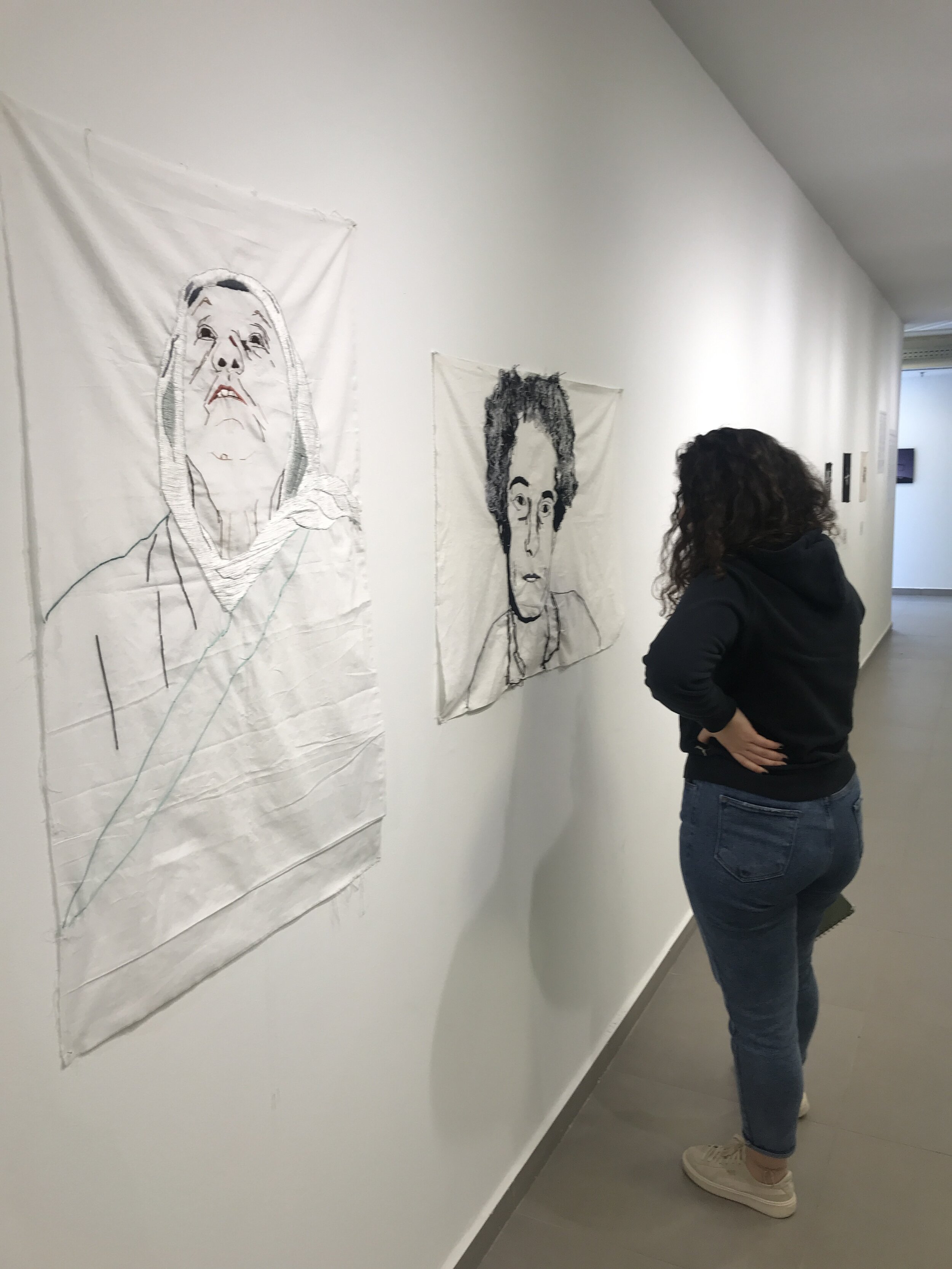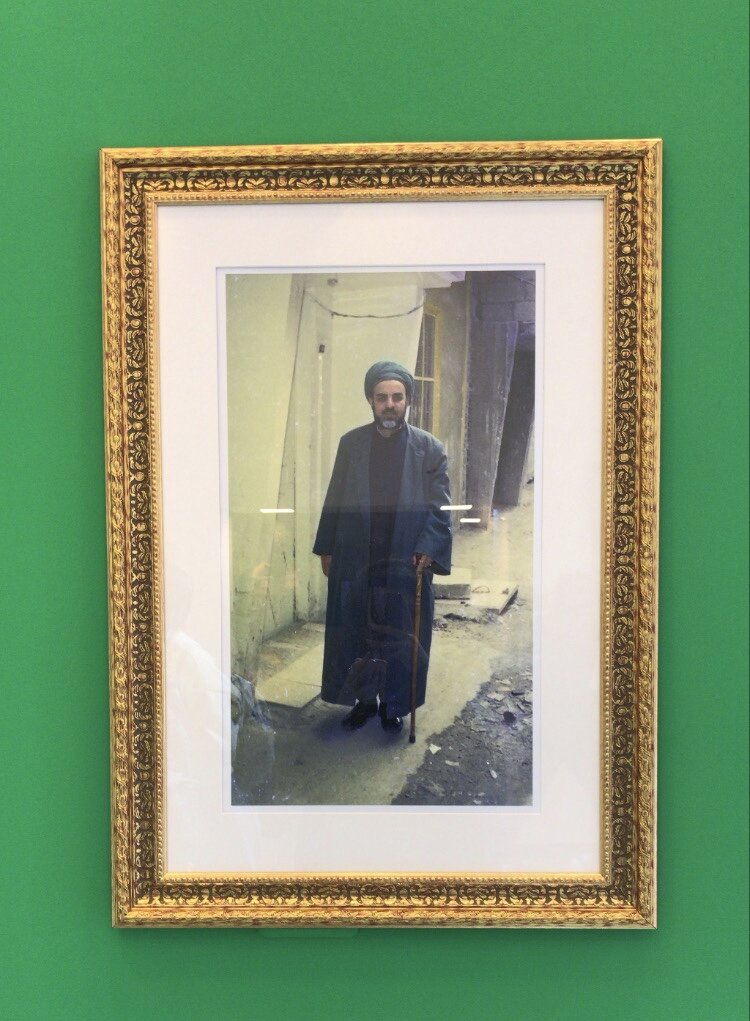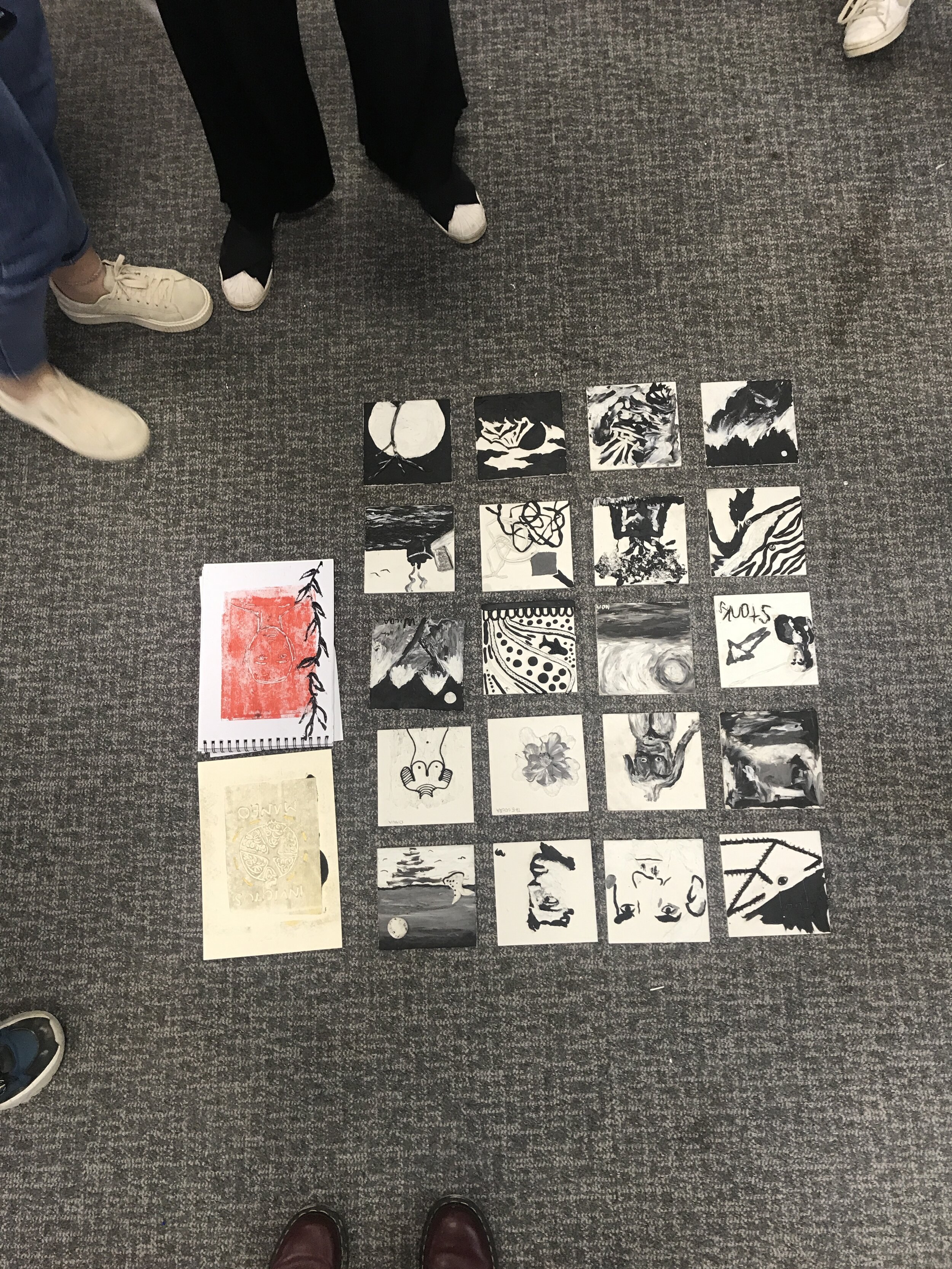On Sunday, January 26th, twenty EMIS Visual Arts students set out on their last art trip for the year accompanied by their teacher Shlomit Kanfi to Umm Al-Fahem, the largest Arab city in Israel. The students were welcomed at the museum with freshly brewed coffee and tea, lovely weather, and Mr Said Abu Shakra, the dynamic founder and director of Umm Al-Fahem Art Museum and the winner of the Shulamit Aloni Prize in December of 2019. He began explaining his rationale behind the foundation of the museum as well as his involvement in the community, and the change he is trying to evoke. We learned that this museum was one of a kind, and the core of existence lies beneath the fact that there is a lack of art galleries within the Arab community. Shortly after, we got a comprehensive tour of the museum and the art it had to offer.
The first exhibit that the students marveled at was situated throughout the second floor of the museum all the way to the roof, it was titled, Red Line | Burning Trees by Doron Gazit. After a discussion about the students’ personal ‘red lines’ and some of the ironies they found behind the exhibit, they made their way down towards a much more ataractic exhibit by Hanan Armaly Haddad, Restoration. The students were serenaded by the background tunes, the lovely crochet table runners scattered all over the floor, and the flowers dangling from the ceiling. After sketching a few inspirations they have derived from the exhibit, and sharing some thoughts and first impressions, we found another addition to our group, Lubna Awidat. Lubna is an artist from Majdal Shams, who graduated from Shenkar College for Engineering and Design. She welcomed us by showing us her exhibit under the title, Undefined. She quickly captured the students when she began to explain the mediums that came into the production of her exhibit, like pliable wood and apples, and how easily she related the essence of it to herself, her identity, and her upbringing in the Golan Heights. We made our way to the bottom floor to see the infamous exhibit by Walid Abu Shakra, In Your Way, you students were mesmerized by the concepts that lay behind such an exhibit, like Sufism, Palestinian identity, collective memories of Umm Al-Fahem, and parts of the Bedouin culture.
Slowly the students were captured by the smell of freshly baked bread smothered with olive oil and Za’atar, a spice used in Levantine cuisine, that the beautiful ladies had prepared for us to enjoy after a long morning of digesting complex art. After a delicious brunch, we were escorted to where our workshops would be taking place. The workshops flew by so quickly and the students took their art works and made their way to the bus in deep thought. Chatting with the students throughout this day, it made me fully comprehend what Mr Said Abu Shakra was talking about in the morning. I understood the importance of portraying Arab and Palestinian Art throughout the Arab community to not only remind the people of what their culture has to offer, but also introduce it to other, such as the EMIS Visual Arts students who definitely came back with a lot more inspiration and knowledge.






